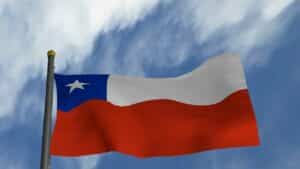Concerted efforts by national, regional and international seed organizations give rise to more science-based phytosanitary requirements, helping to minimize those not technically justified.
As countries seek to protect their homelands from the invasion of foreign fungal, bacterial and viral pathogens that can wreak havoc on their agricultural crops, stringent phytosanitary requirements are put in place. However, the American Seed Trade Association’s senior director for seed health and trade says many of these requirements are not technically justified when it comes to importing or exporting seed.
Ric Dunkle who spearheads ASTA’s Phytosanitary Committee is working with officials at the U.S. Department of Agriculture’s Animal and Plant Health Inspection Service and Foreign Agricultural Service, who are, in turn, working with the regulatory bodies of other countries to resolve some of these issues. Also on the front lines are the Seed Association of the Americas, the International Seed Federation and the in-country seed associations.
One issue taking priority is Brazil’s publishing of Normative 16 this past summer, which replaces Normative 36. Dunkle says Normative 16 contains onerous phytosanitary requirements but through conversations with officials and seed industry leaders, Brazil has postponed enforcement until January 2017.
This gives us a year and a half to work with officials to address issues of concern. In addition to the organizations listed above, Plantum is also working to help resolve this issue.
Most recently, Dunkle says a two-day workshop with Brazil’s ministry of agriculture, known as MAPA, and the Brazilian seed association, known as ABRASEM, was held.
“Through the workshop, we hoped to gain a better understanding from Brazil about the rule, improve our relationship with officials and identify a process for reviewing the pests listed in the country annexes,” he says. “I believe we are on our way to having a sustainable solution to some of our most pressing concerns.”
The primary remaining concerns are inclusion of pests on the country annexes that are not technically justified, lack of seed testing methods for some of the pests, and questionable accuracy of different testing methods.
“Brazil is now very willing to work with us as long as we can provide technical justification,” Dunkle says, highlighting that MAPA is willing to consider amendments to country annexes but wants industry proposals.
Since this meeting, Dunkle has completed a quick analysis of pests of common concern among a number of countries to help harmonize responses to Brazil for suggested rule changes. He says proposals to modify annexes must be prioritized. In the U.S. annex, there are three pests listed that are already in Brazil (Peronospora farinose, P. viciae and tomato ringspot virus), three pests listed that are not in the United States (tomato black ring virus, Xanthomonas oryzae pv oryzae and Potato Spindle Tuber viroid) and 12 pests listed in which the pathway is uncertain.
Moving forward, Dunkle says the group plans to host a follow up workshop later this year.
Another concern coming out of Brazil is how small lots of seed for import are handled. Many countries view small seed lots as high risk, Dunkle shares. Much of this seed used for breeding and research never sees the light of day. The seed goes into the laboratory, is tested and destroyed — it’s never meant for planting, yet these small lots of seed are subject to the same requirements as commercial shipments. This is a major problem, Dunkle explains, noting that these small seed lots shouldn’t be certified through the use of a phytosanitary certificate but rather an import permit.
The problem arises when the sample size required for seed testing is too large. For instance, Dunkle shares that for pospiviroid testing, the sample size required could be as high as 20,000 seeds.
Brazil has asked for proposals to address this issue, and ASTA has formed a working group to determine the best way to certify small lots of seed. The ASTA working group will submit its proposal to APHIS to put forth to Brazilian officials.
In Brazil, all germplasm for research is regulated under one omnibus rule. This means they would have to write a separate rule for small lots of seed, which Dunkle says Brazilian officials have indicated they are willing to consider.
On a more global scale, Dunkle says the International Plant Protection Convention is expected to release the second draft of the International Standard on Phytosanitary Measures (ISPM) specific to seed for country consultation later this year.
“We would like to have our response ready when the second draft comes out for inclusion in the final version of the seed specific ISPM,” Dunkle says, referring to how small seed lots are handled for import/export.
In addition, the Seed Association of the Americas has a working group and is collecting information on current national plant protection organization practices in the region. “We are all working together on this issue,” Dunkle says.
Changes in Chile
Another South American country that has announced changes to its phytosanitary requirements for a number of seeds, including vegetable seed, is Chile.
Changes were set to go into force in December 2015; however, due to concerns raised not only by the U.S. but other countries as well, officials postponed enforcement for a year. For exporting vegetable seeds, Chile requires for certain bacterial and viral pathogens a field inspection of the seed lots to receive the necessary permits. As part of the new requirements, companies would have to complete a field inspection plus random testing of the mother plants of the seed being exported to Chile or have the seed tested prior to export..
Dunkle says that even the seed test option is not feasible because the United States sends so much seed to Chile that doing this would be unnecessarily costly to the industry, clog up testing laboratories, and will cause significant delays in obtaining phytosanitary certificates.
The reason Chile has taken these steps, Dunkle explains, is that officials believe some of the pathogens of concern could be asymptomatic and therefore could be missed during field inspections.
“We are trying to prove that field inspections are completed at a time when any symptoms would be noticeable,” he says. “Additionally, history shows no problems regarding this, so why do this now?”
If the rule were to go into affect as it’s written today, a number of companies would look to move their counter-seasonal production out of Chile.
Through ASTA and APHIS, Dunkle and other industry experts are working with the Chilean seed association, known as ANPROS, and the Chilean phytosanitary officials, known as SAG to come up with an alternative that will satisfy the needs of both countries.
Testing in Mexico
Moving north to Mexico, ASTA and industry leaders, after a number of years, are still working to resolve how best to handle testing protocols for Pepper Mild Mottle Virus (PMMoV).
“We are still working with Mexico on how to resolve issues regarding the certification and testing of seed for PMMoV,” Dunkle shares.
“How are you biologically testing treated seed is a major issue because it will serve as the poster child for how other seed borne diseases are handled.” Seed that has been treated will kill the virus, but because the virus proteins and DNA remain on or in the seed, that seed will still test positive if tested with a molecular method such as ELISA or PCR.
ASTA is working with APHIS, and Dunkle says this issue is a priority for both organizations.
“As an industry, we are prepared to do whatever it takes to get a harmonized seed testing procedure in place where we can both get the same results,” he says.
ASTA and APHIS have formed a working group to conduct a pest risk assessment. Once the PRA is completed APHIS will negotiate a solution with SAGARPA. Dunkle hopes to have the pest risk assessment completed this spring.
As Dunkle lends his time and expertise to educate others around the world about phytosanitary issues and the need for harmonization, the industry presses on taking each small victory as a step in the right direction. “We are making headway,” Dunkle says.











